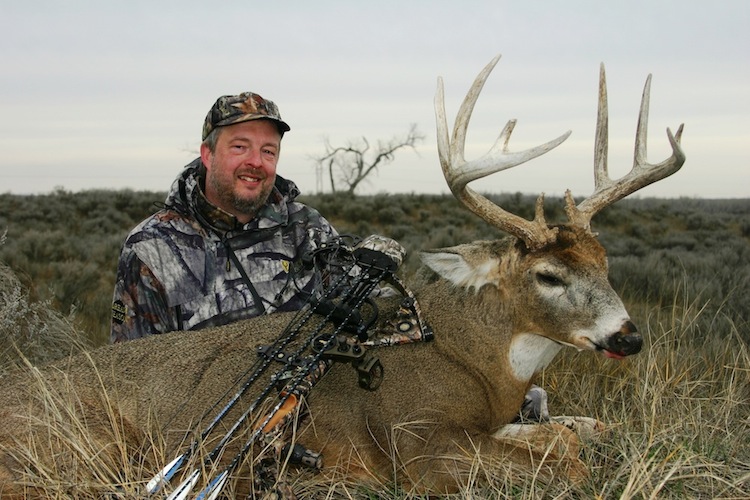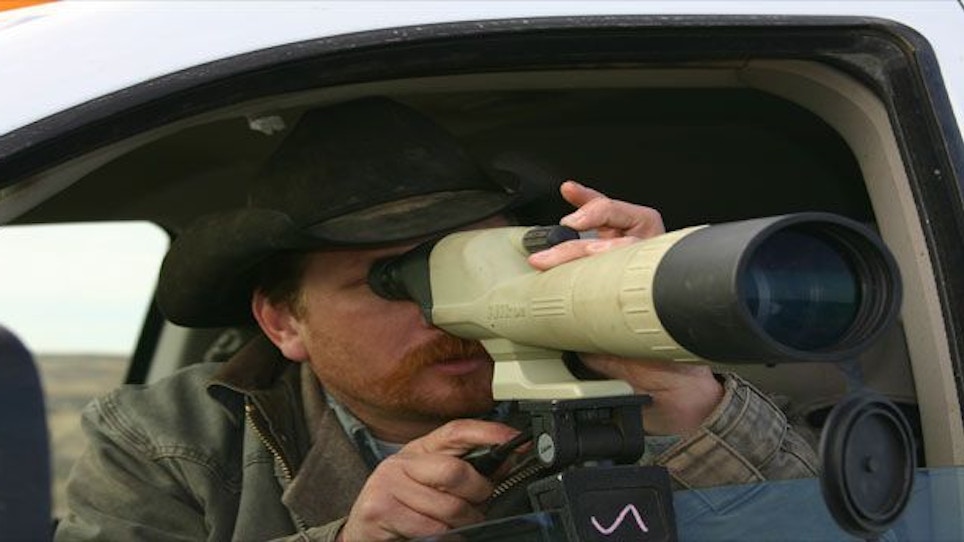I know you’re serious about hunting big whitetail bucks, right? Because you’re a loyal reader of Whitetail Journal, I’m going to violate one of my core principles and let you in on a little secret and tell you about one of my own personal secret spots. Southwestern Kansas is a region that holds some the largest whitetails you’ve ever seen, both in body and antler. I’ve been hunting here off and on for the better part of the last decade, and from what I’ve experienced first-hand and heard from others, both rifle hunters and archers have an excellent chance of locating record-class bucks in this region if they do their homework and choose the right outfitter.
I know that “Kansas” and “big bucks” are synonymous, but generally when big-buck hunters talk about Kansas, they speak of the central and eastern portions of the state. The southwest? Too open, not enough agriculture, not enough cover. Deer densities are not high enough.
Oh, really? For the past three seasons I have been hunting near Liberal, Kan., in the extreme southwestern corner of the state with Jeff Louderback and LL Outfitters (louderback@wildblue.net; 620-621-4616 cell.) On my first hunt with Jeff three seasons ago, I had a drop-tined monster get away from me only to have a 7½-year-old 12-point that scored 164 2/8 Pope-and-Young (P&Y) points walk 22 yards from my stand before my broadhead destroyed his pump room. Last season I chose to bowhunt the bitter post-rut of mid-December, after the gun seasons were over but when bone-chilling cold forces bucks worn to a nubbin from the rigors of the rut to eat a lot — and that means head for the high-calorie food sources. I didn’t let an arrow loose, but that wasn’t because I wasn’t seeing anything. To the contrary, I saw scads of deer and numerous mature bucks, but was holding out for one of the true monsters I kept seeing but wasn’t able to get a shot at. During my one-week hunt, I saw four bucks that I know would have easily scored over 170 P&Y points, but they all stayed just out of bow range.
That just whetted my appetite even more. So in 2009 I made a deal with Jeff — I’d once again come and bowhunt post-rut, taking a small break the first week of December to assist whenever I could with his rifle hunters.
What a deer hunt it turned out to be! Here’s what happened.
LL Outfitters
Jeff and his dad — a Purple Heart recipient from the Vietnam War — have owned this land, on which they run cattle, since 1969. Together they own approximately 50,000 acres, with bowhunting-only allowed on 8,000 acres of prime river bottom. The gun hunters work the sand hills adjacent to the bottoms, which includes a 3,000-acre-plus “sanctuary” owned by the city of Liberal, in which no hunting is allowed. Jeff, who attended college on a rodeo scholarship, is a seasoned hunter and guide, with lots of elk and deer hunting and guiding experience under his belt to go along with the whitetail business. In short, he knows his land and how to offer his clients the best possible opportunity to shoot old, mature bucks.
The southwestern side of Kansas is kind of a hidden secret for big whitetails. Here there are fewer people and more open land than areas of central and eastern Kansas, and the deer quality continues to grow year after year. This area is mostly plains country with scattered river bottom cover featuring lots of agriculture up off the bottoms, including corn, winter wheat and alfalfa. The local deer have both the genetics and the opportunity to grow old enough to produce big antlers. That is most evident when you talk to local deer hunters who say a 150 buck is “a nice one,” but do not really get excited until they see one over 170. They call a “shooter” a 150 or better.
Mike’s Big Bow Buck
Mike Strandlund, long-time editor of Bowhunting World magazine (www.bowhuntingworld.com), joined me right before Thanksgiving 2009 (a week before gun season) for some bowhunting. After his 15-hour drive from Minnesota, we slept in the first morning, then took a tour of the 8,000-acre cottonwood-lined river bottom we would be hunting. Jeff showed Mike the stands and told him about the usual deer movement patterns. Right after lunch we shot our bows and checked equipment. Satisfied our bows were dialed in, we climbed into our stands that evening, rarin’ to go.
For the next couple of days the hunting was a bit slow. Late-season morning hunts here are often pretty lethargic, with the most action occurring in the afternoons and evenings. The weather was a tad warm, in the low 40s in the mornings and 60s during the afternoons, slowing daytime deer movement. Still, one afternoon while walking to my stand I saw a dandy buck feeding right in front of my tree. (OK, I was late getting to the stand, but it was 70 degrees out and who knew a big buck would be moving three hours before dark?) With no wind to muffle any sound, I knew a stalk was out of the question, so instead I waited for him to move through before I climbed into my stand. I was hoping maybe he’d stroll by Mike, who was set up about a half-mile away. Of course that didn’t happen, and for three days we passed on small bucks, did some scouting, moved a couple of stands and re-set some others, shot a few arrows at targets, and generally enjoyed ourselves.
By day four the weather had turned colder, heating up the hunting. Mike decided to stick with a stand on the edge of the property. A week before he arrived another good friend, Steve Sam of Pennsylvania, arrowed a gross 154 buck from this same area. It’s a classic funnel set against the edge of the cottonwood river bottom, with the deer crossing the barbed-wire fence from a neighboring bedding thicket to the food.
Despite cold, single-digit weather, our morning hunts produced the usual breakfast fare: few deer and a couple of small bucks passing through. At 3 p.m. — it is slap dark by 5 p.m. — we headed to the trees. The wind was perfect for my stand, and though the action was steady, I did not see the buck I was looking for. When I hiked back to the truck, Mike was already there. The grin on his face said it all. “I had a pretty good evening,” he said, smiling. “I got one. It’s a pretty heavy old 10-pointer.” 
Are you kidding me? Let’s go see him! And so we do, and guess what? This is the same buck I saw walking right past my tree stand three days earlier before I reached the stand. When it didn’t walk past Mike that same day, I thought it had walked out of our lives forever. Who would have thought this magnificent buck would have given one of us another look? Later Jeff aged the deer at 7½ years; its chipped antlers gross-scored 157 7/8 P&Y points.
Stay tuned for Part 2 to read about how the author got his buck late in the season!






